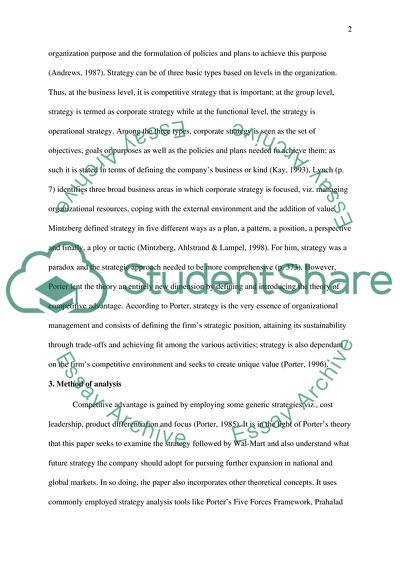Cite this document
(The Generic Strategy Followed by Wal Mart and Leadership by Sourcing Research Paper, n.d.)
The Generic Strategy Followed by Wal Mart and Leadership by Sourcing Research Paper. Retrieved from https://studentshare.org/marketing/1747223-you-have-been-approached-by-the-board-of-directors-of-your-own-organisation-or-an-organisation-of-your-own-choosing-to-advise-them-on-the-possibility-of-participating-more-actively-in-the-national-and-global-market
The Generic Strategy Followed by Wal Mart and Leadership by Sourcing Research Paper. Retrieved from https://studentshare.org/marketing/1747223-you-have-been-approached-by-the-board-of-directors-of-your-own-organisation-or-an-organisation-of-your-own-choosing-to-advise-them-on-the-possibility-of-participating-more-actively-in-the-national-and-global-market
(The Generic Strategy Followed by Wal Mart and Leadership by Sourcing Research Paper)
The Generic Strategy Followed by Wal Mart and Leadership by Sourcing Research Paper. https://studentshare.org/marketing/1747223-you-have-been-approached-by-the-board-of-directors-of-your-own-organisation-or-an-organisation-of-your-own-choosing-to-advise-them-on-the-possibility-of-participating-more-actively-in-the-national-and-global-market.
The Generic Strategy Followed by Wal Mart and Leadership by Sourcing Research Paper. https://studentshare.org/marketing/1747223-you-have-been-approached-by-the-board-of-directors-of-your-own-organisation-or-an-organisation-of-your-own-choosing-to-advise-them-on-the-possibility-of-participating-more-actively-in-the-national-and-global-market.
“The Generic Strategy Followed by Wal Mart and Leadership by Sourcing Research Paper”, n.d. https://studentshare.org/marketing/1747223-you-have-been-approached-by-the-board-of-directors-of-your-own-organisation-or-an-organisation-of-your-own-choosing-to-advise-them-on-the-possibility-of-participating-more-actively-in-the-national-and-global-market.


